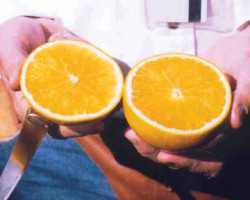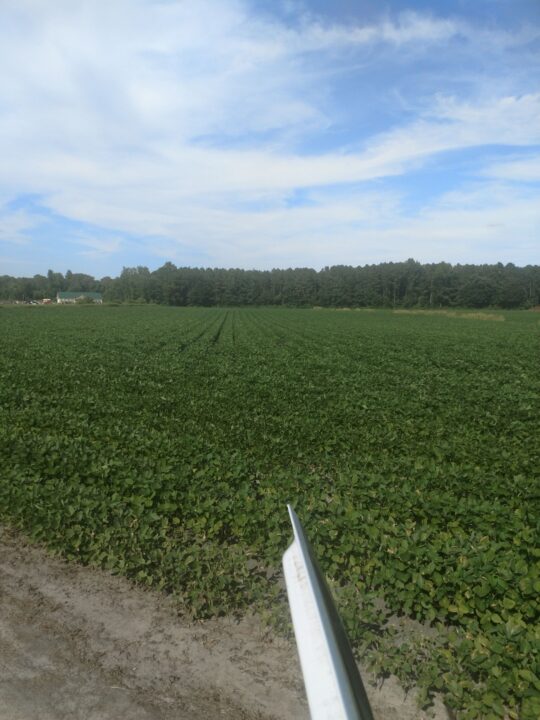Navel Novelty in Fresh Market

Nevertheless, navel oranges have been an integral part of Florida’s commercial, roadside, and gift markets for generations. There is strong demand for Florida navel oranges. Overall, growers have learned to manage the challenges. Navels are the backbone of the gift market and represented one-third of Florida fresh packed orange volume in 2009-2010. Unlike some production areas that rely on a wide variety of navels to extend the navel season, Florida has relied more on geography as a means of achieving a wider harvest window. Production of navels begins in the southernmost counties and extends northward over time. Mainline navel production consists mostly of Washington and Glenn, with some limited production of Lane Late and a private late maturing navel.
Recently, there has been a renewed interest in the evaluation of new navel orange varieties as a means of extending the Florida navel harvest. New Varieties Development & Management Corp. (NVDMC) has been working to identify the most promising new navel selections for trial. Limited only by the capacity of Department of Plant Industry’s citrus import quarantine program, NVDMC has begun the process of importation and trial. Navels will be coming from public and private sources. It is hoped that the Washington and Glenn Navels will remain the primary peak season varieties, while others will extend the navel season to earlier and later months. Some navels of interest are already here, some are now in quarantine, and others will be imported as capacity permits. Undoubtedly, some of these new navels will have commercial potential in Florida, while others will be discarded. Information on this project will be disseminated through this column and the Florida Nursery, Growers & Landscape Association. Growers and nurseries with information on promising navel selections should contact NVDMC.
Development Pipeline
Varieties currently available through DPI but not yet “recommended”
– Fisher: Available through DPI. It is expected to be slightly earlier than Glenn.
– Fukumoto: Available through DPI. It is expected to be slightly earlier than Fisher.
Older navel varieties not commercially grown in Florida but targeted for trial
– Newhall and Palmer: Both are expected to be earlier than Washington and Glenn.
– Chislett, Powell, and Robyn: They are expected to be later than Washington and Glenn.
– Ryan Navel : Same season as Glenn, but is hoped to be easier peeling.
Private patented navel varieties scheduled for trial (names withheld)
– One expected to be later than Lane, and the other hoped to be later still.
– A very early navel will soon be imported to Florida by a private source, and made
available through a managed club-style program.
An old-line Florida navel
Thought to be lost, the Crisafulli navel orange was recently rescued with the help of Bob Adair (Florida Research Center for Agricultural Sustainability) and Phil Rucks (Rucks Citrus Nursery). Once grown extensively on Merritt Island, the Crisafulli is reported to have been a very high production navel. Budwood was recently rescued and entered into the DPI cleanup program in Winter Haven. Once out, wood for this navel will be available for private trials or production. This variety will retain the family name, Crisafulli Navel.










